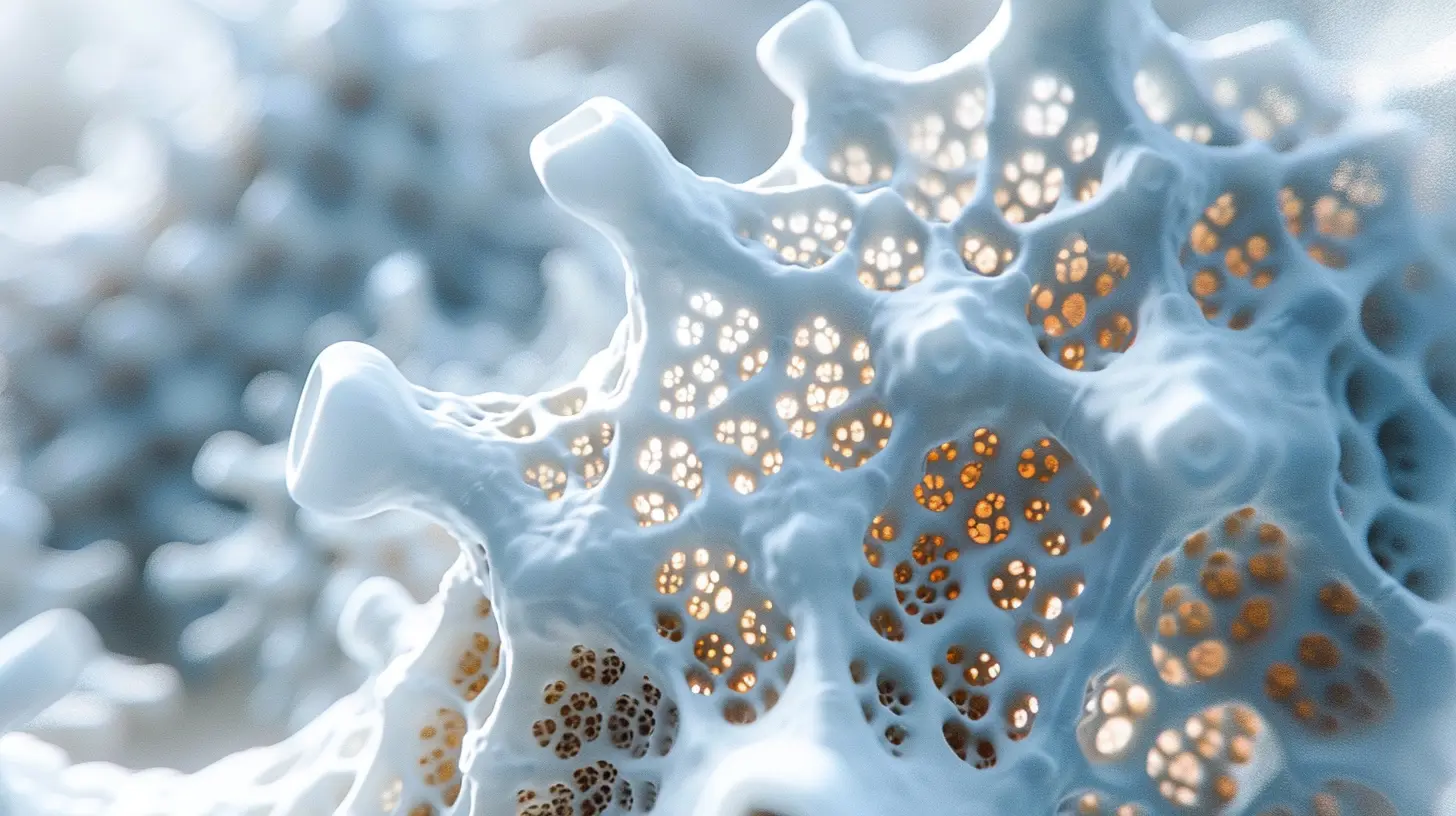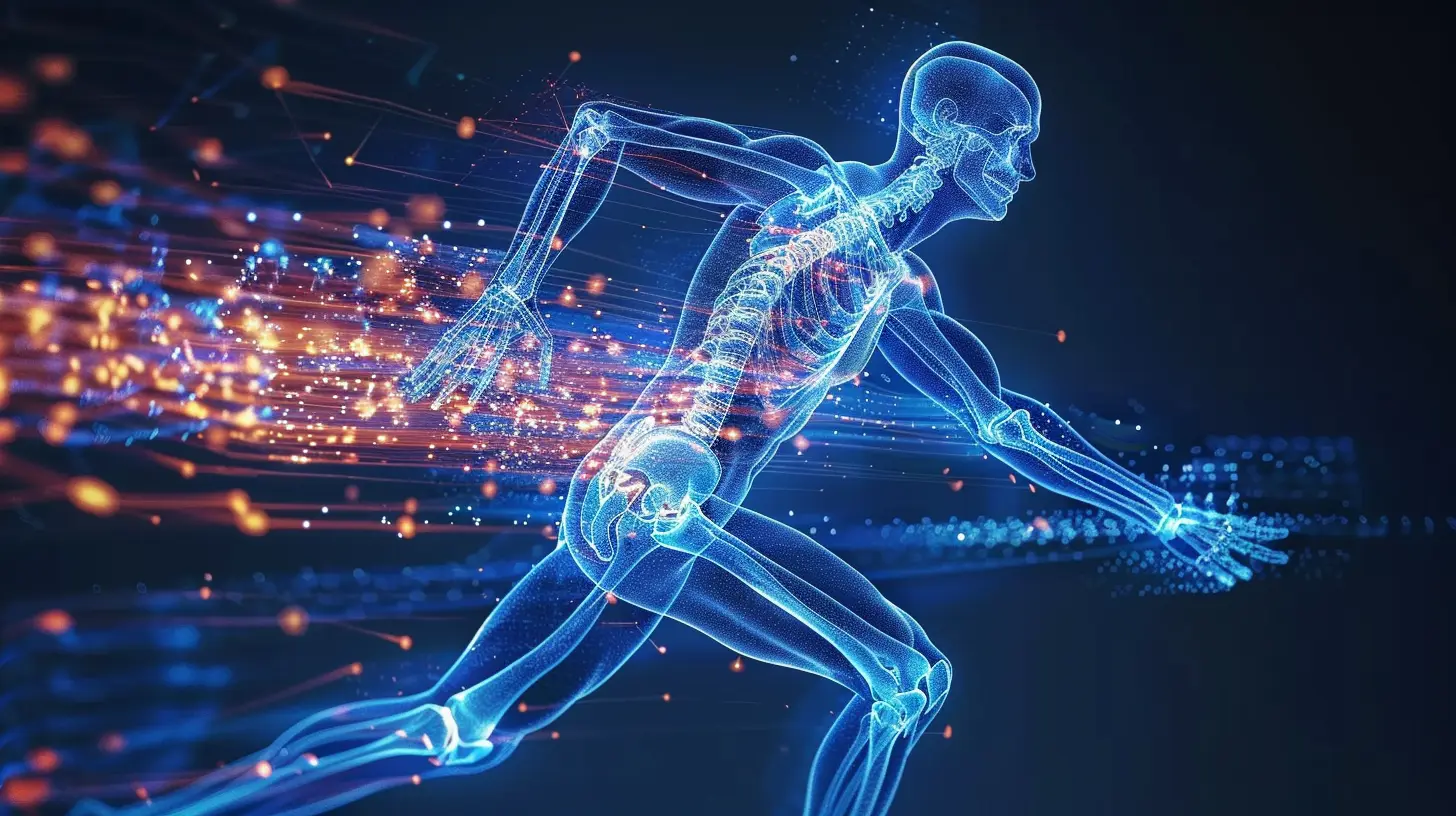The Science Behind How Bones Heal and Regenerate
14 September 2025
Ever wondered what actually happens when you break a bone? How does your body magically pull off the incredible feat of repairing itself, often making the bone even stronger than before? Bone healing is one of the coolest examples of your body’s natural ability to regenerate. It’s not just glue and duct tape — there’s real science behind it!
In this article, we’re diving deep into the fascinating world of bone repair and regeneration. By the end, you'll understand the process your body kicks into gear the moment a fracture occurs, what affects healing time, and ways you can support your bones during this impressive biological reboot.
What Are Bones Made Of Anyway?
Let’s start with the basics. Bones aren’t just hard, lifeless structures. They’re living, dynamic tissues packed with blood vessels, nerves, and marrow. Think of them as the scaffolding of your body — but they’re smarter and much more complex than anything built from steel or wood.Bones are made up of:
- Collagen: A protein that gives bones flexibility.
- Calcium phosphate: A mineral that adds hardness.
- Bone cells: Like osteoblasts and osteoclasts that continuously remodel bone tissue.
- Bone marrow: The soft core where blood cells are created.
Yup, your bones are constantly changing — absorbing and removing mineral matrix in a dance called bone remodeling.
Breaking Down a Break: What Happens When a Bone Fractures?
When you break a bone, it might feel like everything’s gone wrong. But in reality, your body immediately starts putting things back together.Here’s what’s going on behind the scenes:
1. The Inflammatory Phase (0–7 Days)
Imagine your body’s alarms going off — red lights flashing, sirens blaring. That’s what happens right after a fracture. Your blood vessels rupture, forming a clot called a fracture hematoma.This clot is more than just a mess — it’s actually loaded with immune cells and signals that say, “Hey, let’s fix this!” Blood flow to the area increases, and inflammation kicks in. Sound bad? It’s not. Inflammation brings in cleanup crews to remove dead cells and prepare the area for healing.
2. The Reparative Phase (1–3 Weeks)
This is the construction zone. Special cells called osteoblasts start building a soft callus made of cartilage and fibrous tissue around the break. It’s not bone yet, but think of it like scaffolding — a structure that gives your body a rough template to follow.As the days pass, your body turns the soft callus into a hard callus, laying down new bone mineral where the fracture used to be. Osteoblasts keep working like little bricklayers, stacking calcium-rich tissue layer by layer.
3. The Remodeling Phase (3 Weeks–Several Months, or Even Years!)
Once the hard callus has formed, the work isn’t done. At this point, your body starts shaping and refining the new bone to match the original structure as closely as possible.Enter the osteoclasts, which act like demolition experts. They eat away the excess bone while osteoblasts fine-tune things. This phase can take months — but it’s essential for restoring strength and flexibility.
Why Don’t Bones Heal Instantly?
I get it — waiting weeks or months for a bone to heal can be super frustrating. But here’s the thing: bone healing isn’t just patchwork. It’s rebuilding something that’s both strong and functional.Several factors affect how quickly and how well your bones heal:
- Age: Kids bounce back faster than adults. Their bones are growing and remodeling all the time.
- Nutrition: Calcium, vitamin D, protein, magnesium — your bones love those. Lack them, and healing takes a hit.
- Health conditions: Diabetes, smoking, or poor circulation can interfere with bone growth.
- Type of fracture: Clean breaks heal faster than shatters or complicated fractures.
- Stability and alignment: Bones need proper support and alignment to heal properly — that's where casts, splints, and sometimes surgery come in.
The Role of Stem Cells in Bone Regeneration
Okay, here’s where things get really sci-fi — stem cells play a major role in bone healing.Bone marrow is home to mesenchymal stem cells (MSCs). These versatile little guys can turn into several types of cells, including the bone-forming osteoblasts and cartilage-producing chondrocytes.
When a bone gets injured, these stem cells get “recruited” to the site. Once there, they get to work transforming into the exact cells needed to fix the damage. It’s like your body has a Swiss Army knife of repair tools, ready to deploy when needed.
Scientists are even researching ways to use stem cells from other parts of the body or from donors to help people with slow-healing or large bone defects. One day, growing bone in a lab might be as routine as putting on a cast!
Bone Healing Vs. Regeneration: Aren’t They the Same?
Not exactly.- Healing is your body’s natural way of patching up damage.
- Regeneration is more like growing something new — think lizards regrowing their tails.
Bone is unique because it’s one of the few human tissues that can actually regenerate, not just scar over. Skin heals with a scar. Bone? When it’s done healing, the new tissue is often as strong (or stronger) than the original.
Pretty amazing, right?
How Can You Help Your Bones Heal Faster?
Now that we’ve geeked out on the science, let’s bring it back to practical stuff. What can you do to help your bones mend properly?1. Eat Like Your Bones Depend on It (Because They Do)
Fuel your recovery with nutrient-rich foods. Think:- Calcium: Dairy, leafy greens, almonds
- Vitamin D: Sunshine, fatty fish, fortified foods
- Protein: Lean meats, beans, eggs
- Magnesium and Zinc: Whole grains, seeds, nuts
2. Stay Active (But Not Reckless)
Movement increases blood flow, which helps with healing. But don’t overdo it! Follow your doctor’s advice and ease back into activity gradually.3. Skip the Smokes and Booze
Both smoking and heavy drinking slow down healing — like, big time. Smoking restricts blood flow, while alcohol interferes with new bone formation.4. Listen to Your Body
Pain is a warning signal. If your body’s telling you something’s not right, don’t ignore it. Healing takes time, and rushing can lead to setbacks or even re-injury.Can Bones Heal Themselves Without Any Help?
Technically, yes. Your body is fully capable of healing broken bones without medical intervention, given the fracture is minor and stable. BUT — and it's a big but — if the bone isn’t aligned properly or if there are multiple fragments, healing can go wrong fast.That’s why doctors use casts, braces, or metal rods — not to do the healing, but to make sure the conditions are just right for your body to work its magic.
Innovations in Bone Healing: The Future Is Bright
Science never sleeps, especially when it comes to fixing the human body. Here are some exciting new frontiers in bone healing:- 3D-Printed Bone Scaffolds: Researchers are using printers to create templates that help guide bone growth in complex fractures.
- Bone Morphogenetic Proteins (BMPs): These are naturally occurring proteins that boost bone formation — some surgeries already use them to enhance healing.
- Smart Implants: Imagine a metal rod in your leg that releases medicine or monitors healing in real-time. Sounds like sci-fi? It’s getting closer to reality.
Even gene therapy and CRISPR are on the radar for future bone regeneration advancements. One day, fractures might heal in half the time — or even less.
Final Thoughts: Your Bones Are Smarter Than You Think
So here's the scoop: your bones aren't just sticks holding you upright. They’re living, thinking, regenerating machines working constantly to keep you mobile, strong, and safe.When you fracture a bone, you're not broken — you're entering an incredible biological process that’s been perfected by evolution over millions of years.
Want to help the process? Eat right, stay active (mindfully), and trust your body — because the science behind how bones heal and regenerate is not just fascinating… it’s downright awe-inspiring.
all images in this post were generated using AI tools
Category:
Bone HealthAuthor:

Sophia Wyatt
Discussion
rate this article
1 comments
Scout Hamilton
Fascinating insights on bone healing! Understanding the regeneration process can empower better recovery strategies and health outcomes.
September 20, 2025 at 4:01 AM

Sophia Wyatt
Thank you! I'm glad you found the insights valuable. Understanding bone healing is indeed crucial for improving recovery and health outcomes.


